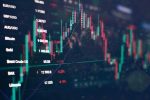Investors are increasingly turning to actively managed exchange traded funds amidst escalating market volatility and the looming threat of a recession. The S&P 500 closed down 5.8% for the week that ended June 16, its worst week since 2020, before partially recovering in subsequent days.
“In June, stocks sold off before recovering, providing an opportunity for active fund managers to take advantage of market volatility and showcase their value by adding favored securities,” said Todd Rosenbluth, head of research at VettaFi. “In contrast, index-based funds went on a ride during the volatility.”
With inflation the highest it’s been in four decades and interest rates rising, markets are expected to remain volatile. And in such a volatile market, passive ETFs may not offer protection against downside risk. They also don’t offer investors a way to seek above-average returns.
With index funds unable to provide strong returns or protect against downside risk, active ETFs are “picking up steam with investors,” with more holding active ETFs in their portfolios now than two years ago, according to Trackinsight’s Global ETF Survey 2022. Per Pensions & Investments, 37% of survey respondents plan to increase the share of active ETFs in their portfolios by at least 5% this year, up from 25% who said the same in 2020.
One advantage that active managers have over index funds is that they can not only select areas where they can have an edge, but they can also avoid places with the most volatility. At Exchange: An ETF Experience 2022, JPMorgan Asset Management’s global head of ETF solutions, Byron Lake, told VettaFi editor-in-chief Lara Crigger for “ETF Leaders, Powered by the New York Stock Exchange” that active management “can adapt when the market changes” in real time, while an index fund cannot.
“Because of active management, the investors are able to change when the market environment changes,” said Lake. “So, if it’s a fixed income strategy and we’re worried about duration, maybe they can pull their duration in. If they’re seeing the market on the equity side rotate from one sector to the next, maybe they adapt the portfolio to do that as well.”
Active managers have been proving their worth over these past few months. In April, 54% of the large-cap active funds outperformed their benchmark, the Russell 1000. In May, 56% beat the index — and by an average of 11 basis points.
T. Rowe Price offers a suite of actively managed ETFs. T. Rowe Price has been in the investing business for over 80 years through conducting field research firsthand with companies, utilizing risk management, and employing a bevy of experienced portfolio managers carrying an average of 22 years of experience.
For more news, information, and strategy, visit the Active ETF Channel.








